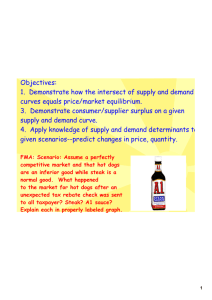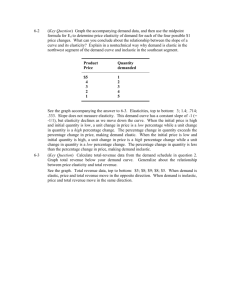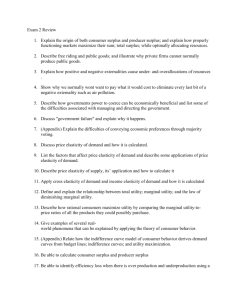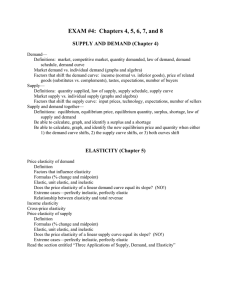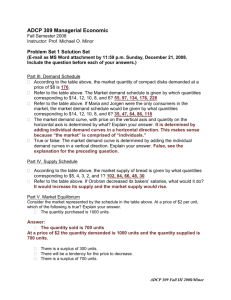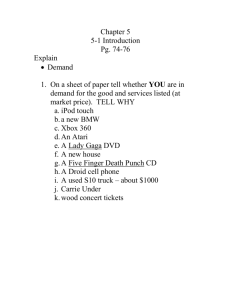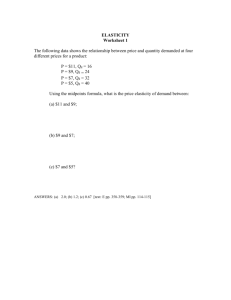Use the ideas of consumer surplus and producer surplus to explain
advertisement
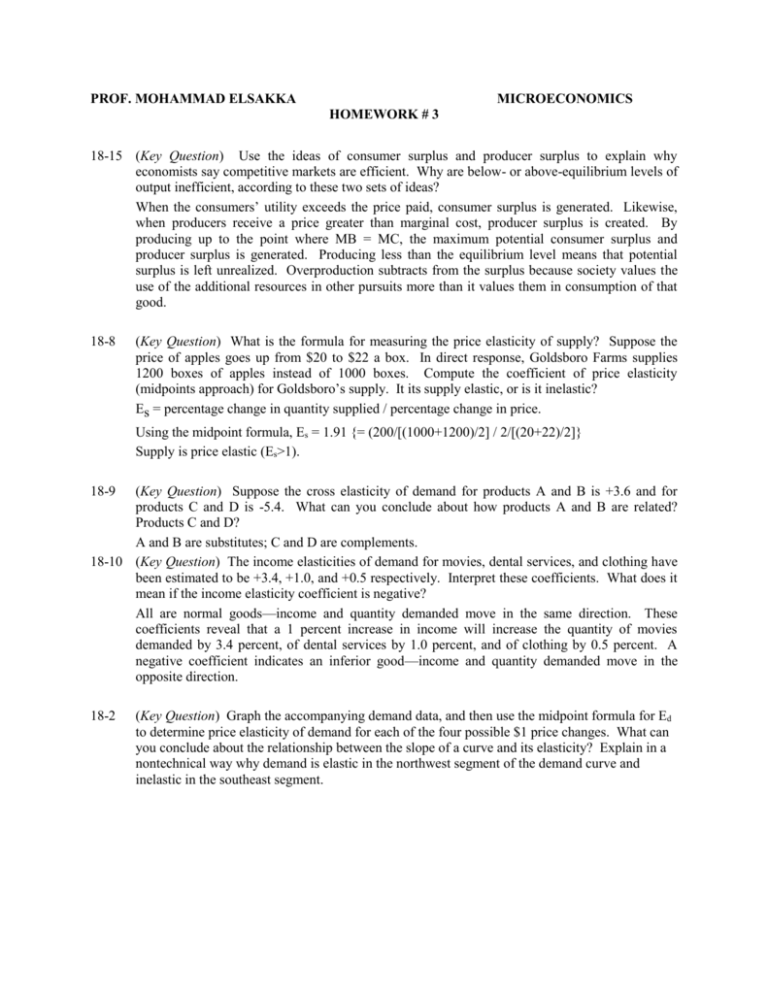
PROF. MOHAMMAD ELSAKKA
MICROECONOMICS
HOMEWORK # 3
18-15 (Key Question) Use the ideas of consumer surplus and producer surplus to explain why
economists say competitive markets are efficient. Why are below- or above-equilibrium levels of
output inefficient, according to these two sets of ideas?
When the consumers’ utility exceeds the price paid, consumer surplus is generated. Likewise,
when producers receive a price greater than marginal cost, producer surplus is created. By
producing up to the point where MB = MC, the maximum potential consumer surplus and
producer surplus is generated. Producing less than the equilibrium level means that potential
surplus is left unrealized. Overproduction subtracts from the surplus because society values the
use of the additional resources in other pursuits more than it values them in consumption of that
good.
18-8
(Key Question) What is the formula for measuring the price elasticity of supply? Suppose the
price of apples goes up from $20 to $22 a box. In direct response, Goldsboro Farms supplies
1200 boxes of apples instead of 1000 boxes. Compute the coefficient of price elasticity
(midpoints approach) for Goldsboro’s supply. It its supply elastic, or is it inelastic?
Es = percentage change in quantity supplied / percentage change in price.
Using the midpoint formula, Es = 1.91 {= (200/[(1000+1200)/2] / 2/[(20+22)/2]}
Supply is price elastic (Es>1).
18-9
(Key Question) Suppose the cross elasticity of demand for products A and B is +3.6 and for
products C and D is -5.4. What can you conclude about how products A and B are related?
Products C and D?
A and B are substitutes; C and D are complements.
18-10 (Key Question) The income elasticities of demand for movies, dental services, and clothing have
been estimated to be +3.4, +1.0, and +0.5 respectively. Interpret these coefficients. What does it
mean if the income elasticity coefficient is negative?
All are normal goods—income and quantity demanded move in the same direction. These
coefficients reveal that a 1 percent increase in income will increase the quantity of movies
demanded by 3.4 percent, of dental services by 1.0 percent, and of clothing by 0.5 percent. A
negative coefficient indicates an inferior good—income and quantity demanded move in the
opposite direction.
18-2
(Key Question) Graph the accompanying demand data, and then use the midpoint formula for Ed
to determine price elasticity of demand for each of the four possible $1 price changes. What can
you conclude about the relationship between the slope of a curve and its elasticity? Explain in a
nontechnical way why demand is elastic in the northwest segment of the demand curve and
inelastic in the southeast segment.
Product
price
Quantity
demanded
$5
4
3
2
1
1
2
3
4
5
See the graph accompanying the answer to 18-3. Elasticities, top to bottom: 3; 1.4; .714; .333.
Slope does not measure elasticity. This demand curve has a constant slope of -1 (= -1/1), but
elasticity declines as we move down the curve. When the initial price is high and initial quantity
is low, a unit change in price is a low percentage while a unit change in quantity is a high
percentage change. The percentage change in quantity exceeds the percentage change in price,
making demand elastic. When the initial price is low and initial quantity is high, a unit change in
price is a high percentage change while a unit change in quantity is a low percentage change. The
percentage change in quantity is less than the percentage change in price, making demand
inelastic.


